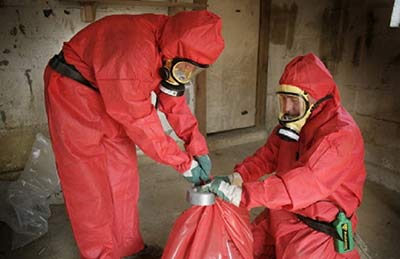Non-licensed asbestos removal
Asbestos has numerous helpful structure properties
Found in structures all over the UK, asbestos has numerous helpful structure properties including its protection from fire and its insulation properties. However, it can equally be exceptionally harmful to the well-being of tenants, employees and the general public.
We have become increasingly mindful of the health conditions brought about by exposure to asbestos, and measures have now been set up to ensure workers entrusted with its abatement. One technique for controlling danger is labeling the removal of asbestos as either licensable or non-licensed with the goal that fitting measures and activities can be applied. This will influence both the safeguard techniques that are taken and the capabilities that are needed to remove them.
Lower risk classification
Non Licensed asbestos removal is the lower risk classification for the removal of asbestos materials and products. The risk is only low where the works are completed appropriately to the current HSE guidance and by trained experts. Removal of non-licensed asbestos requires critical knowledge and background of training, equipment, waste authorization, and knowledge of the materials and the condition of the asbestos is removed. When searching for an asbestos contractor to complete non-licensed asbestos removal the ideas listed below are very important and inevitable.
What kind of asbestos removal is ideal for your project?
Choosing which kind of asbestos removal is best for your needs will imply a careful risk assessment. The risk assessment is consistently performed before any asbestos-related work is started, and it must contain key information, for example, the asbestos type and the suggested level of personal protective equipment. When choosing which kind of removal your task will require, you should initially think about a scope of factors. These include:
Friable means effortlessly disintegrated or diminished to powder. The more friable material is, the more probable it will deliver asbestos fibers when worked on and the more prominent risk exposure. Work that disturbs more friable materials, for example, asbestos pipe lagging/AIB ceiling panels will, in general, be classified as Licensed Asbestos Removal works. Work that disturbs the most un-friable materials, for example, asbestos cement can regularly be treated as non-license work.
ACM types like cement garage roof sheets and floor tiles, will be classified as non-licensed when they're kept in good condition. Yet, a few types might turn out to be more friable when they're dealt with and require the LARC to inform the proper administrative body.
Instances of notifiable non-licensed work incorporate large-scale removal of asbestos textured ornamental coatings utilizing steaming or gelling strategies, asbestos cement items where the material has been considerably broken up or damaged (because of fire or flood damage), or wherein the removal will damage the cement sheeting and release a lot of residues containing asbestos strands.
Non-Licensed works
Removing bolts from asbestos floor tiles is classed as non-licensed work. To participate in these unlicensed works, engineers will require the legitimate preparation, protection, PPE, RPE, hazard assessment, and a plan of work to be set up before they begin works on site. When contractors work with asbestos, it is vital to do a risk assessment first and afterward, make the essential plans to manage how the functions will be completed.
PPE and RPE
For non-licensed works, you would have to wear proper coveralls and utilize a H Type vacuum cleaner. These have unique types of filters that contain asbestos fibres within the vaccum. Air is separated to keep the asbestos fiber from being spread. This equipment is consistently maintained via a declaration of performance (DOP).






